Gainward PowerPack! CoolFX Ultra/2600 TV-DVI-DVI Review
Gainward PowerPack! CoolFX Ultra/2600 TV-DVI-DVI
With some nifty water cooling, Gainward has produced the fastest graphics card on the planet, but you're going to need very deep pockets if you want those high frame rates.
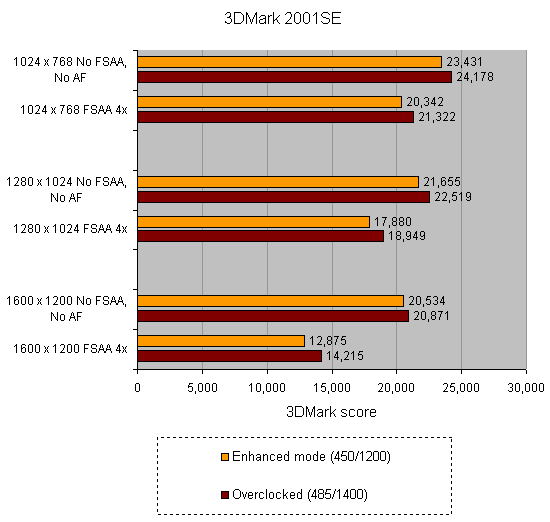
Verdict
Key Specifications
- Review Price: £586.00
If the speed of a graphics card depended on how many words were in its name, the Gainward PowerPack! CoolFX Ultra/2600 TV-DVI-DVI would probably be the fastest card on the planet.
Gainward’s CoolFX line of cards tailors to those for whom having the latest kit just isn’t enough. These individuals simply must own the absolute fastest stuff out there regardless of the price.
To scale these heights, the CoolFX doesn’t bother with your run-of-the-mill air cooling but instead uses water cooling to keep excessive heat under control. Water cooling brings two key advantages – first, it keeps the card cooler than any conventional fan, enabling it to be run at much higher frequencies. It’s also much quieter, so you can get the benefit of higher clocks without any of the noise intrusion of a high-rpm fan.
However, there’s no such thing as a free lunch, and with this in mind, the Gainward PowerPack! CoolFX Ultra/2600 cards will cost you far more than a standard GeForce 6800 Ultra. At the time of writing this card costs £586.33 from Scan, while a conventional air cooled model such as the AOpen Aelous 6800 Ultra (a full review of which is imminent) is only £369 – a fairly significant 58 per cent price differential.
You also have to negotiate a complex and potentially hazardous installation process. Opening the large box you’re presented with a quite daunting amount of kit. Even if you’re used to installing graphics cards, you’re really going to have to put your engineer’s hat on to get to grips with this little lot. Our advice would be to set aside plenty of time, and enlist the help of a technically minded-friend if you’re not feeling too confident yourself.
If you decide that you’re brave enough (and rich enough), inside the box you’ll find a water tank, a pump, a radiator, a bottle of corrosion protection liquid and an amount of tubing. There are also a number of connectors, a power splitter, and DVI to VGA converters. You do get a manual, which while wordy, proved not to be as clear as we would have liked. What isn’t in the box is a bottle of distilled water, so you’ll have to get hold of one – a visit to the local garage shop helped us out here.
Gainward sensibly suggests that you don’t start to fill the system with water while it’s in your PC to avoid the risk of water getting onto your components. In fact the whole process is a great advert for InertX, a coolant that isn’t corrosive and won’t damage anything if it spills. However, for the purpose of creating a standard testing environment, we chose to use distilled water, as indicated in the manual.
Gainward suggests activating the pump system without powering up the PC. This is to ensure that the system gets filled with water before the graphics card has to do any work, ensuing that it doesn’t overheat and get damaged. To do this you need to short the power plug to make the power supply think that it’s plugged into the board. Gainward supplies a connector plug to enable you to do this. This proved easier said than done however. Using a recent ATX power supply proved difficult, as these won’t power up unless a load is applied, so we had to use an older power supply to get around this issue.
Once passed this hurdle we then found that the Eheim pump included was dead, which tarnished our opinion of the kit’s build quality. However, a replacement arrived speedily from Gainward, and all was fine from then. It’s also worth mentioning that we weren’t the first publication to test the kit that arrived initially, so to be fair to Gainward, the pump could have been damaged by the previous reviewer.
The way the Gainward CoolFX works is simple. A pump pushes water from a tank though tubing into the water block that sits over the GPU and memory. The water cools these as it passes over them and is then pumped into the radiator. This contains a large 120mm fan to cool the water down, before it is passed back to the water block.
So how do you connect all this kit up? The water tank hooks easily to the pump and then the fan has to be connected to the radiator. The water block on the card, has two connectors – an inlet and an outlet. You then attach the tubing between the pump and card and the card and radiator. These can be cut to length to fit your case, but you need to keep the tubing bend free so that the water flow is unimpeded. Take care to attach the tubing carefully and seal the connections with the supplied screws – you don’t want any water leaking onto your motherboard.
We then started to carefully fill the tank with one part coolant to three parts distilled water. Once this was full we shorted the power supply and switched it on. The pump then whirred into life and the water moved around the system. It was then just a case of refilling the tank until it remained full, which took a few minutes to do. Naturally air will get into the system, and this is removed by rotating the fan around.
It’s then worth leaving things running to check there are no leaks, before turning it all off and carefully installing it into your PC.
Once you’ve set it all up, you need to install the Gainward ExpertTool Utility in order to get to those high overclocking frequencies. ExperTool has sliders that will let you set the GPU all the way up to 500MHz and the memory up to 1500MHz. However, even with the water cooling the Gainward can’t achieve these speeds. Instead, there are standard and enhanced modes. Standard will set the card to run at 400/1100 for GPU/memory speeds, while enhanced increases this to 450/1200. We ran all the tests at enhanced mode but to see how far we could push the card we then ran them all at 485/1400MHz. This proved to be no problem for the Gainward, with the pump keeping the system cool at all times. Therefore, its these scores that we’ll be quoting.
Comparisons with an air cooled GeForce 6800 Ultra depend on which board you look at. The nominal specifications for the 6800 Ultra are 400MHz for the GPU and 1,000MHz for the memory. However, the XFX 6800 Ultra card we looked at ran at 450MHz, while the AOpen Aeolus 6800 Ultra that we’ll be reviewing soon only runs at 400/1100.
The test rig consisted of a 3.4GHz Pentium 4 Extreme Edition and two 512MB sticks of RAM running in dual-channel configuration.
To compare we have scores for an XFX 6800 Ultra. However, this was tested on a slightly different system. This was an Evesham Evolution Extreme machine, equipped with a 3.4GHz P4 Extreme Edition, a fast 875 chipset motherboard and two Western Digital 10,000rpm Raptor drives, which should give the XFX an advantage. But can the Gainward make up the ground?
Starting with the base test of 3DMark03 at 1,024 x 768 with no image quality (IQ) enhancements such as FSAA and AF, the Gainward scored 14,448, while in the same system the AOpen only scored 12,466. In the Evesham system, the XFX 6800 Ultra scored 12,875 – 15 per cent slower than the Gainward’s score. The water cooling and the high clocks immediately show their worth and the story continues throughout most of the tests.
In the AquaMark3 benchmarks the Gainward was 3fps faster than the XFX at 1,024 x 768 with IQ on, and 5fps faster at 1,600 x 1,200. In X2 however, the XFX was a little closer. In fact, at 1,024 x 768 the XFX outperformed the Gainward, where the Gainward only reached 96.1fps. It was faster once the IQ was enabled but only by a couple of FPS.
The results for Halo proved to be something of an oddity as the scores actually dropped with the card clocked at 485/1400 compared to 450/1200. We monitored the temperature using the driver and there seemed to be no problem, with the card not exceeding 50 degrees. Unfortunately, Far Cry wasn’t run with the XFX GeForce 6800 Ultra but we did have time to run it on the test system with the AOpen GeForce 6800 Ultra. At 1,600 x 1,200 with all IQ on, the Gainward reached a nice round 50fps, while the AOpen managed a mere 39fps.
From the scores it’s clear that the Gainward can claim to be the fastest card around right now – but at what price. The Gainward is 15 per cent faster than the AOpen in 3DMark03 and 28 per cent faster in Far Cry. But as we mentioned, the Gainward is a staggering 58 per cent more expensive than the AOpen.
The near silent running is a bonus but if you’re going to make the effort of installing this card you might as well go for an all encompassing solution that silently cools your CPU as well. If you are looking for an entirely water cooled PC it might make more sense to buy one pre-built from a specialist such as Holly Computers or Alienware with its water cooled dual card Video Array solution.
And while the Gainward might be supreme now it could be a pretty short reign. Once motherboards with dual PCI Express x16 slots appear the party will be over. You’ll be able to pick up two GeForce 6800 GTs for not much more than the Gainward and get a significant performance boost.
”’Verdict”’
The Gainward PowerPack! CoolFX Ultra/2600 is unquestionably the fastest card you can buy right now, and it’s near silent too. For that it deserves recognition. However, the effort of installation and the cost of the card pretty much, (if you’ll excuse the pun), pour water on its achievement.
Clearly, while the Gainward has the performance advantage, in terms of value for money it’s left out in the cold. The CoolFX is aimed at those who have time and money in abundance, but for the rest of us, it’s just not worth it.
”’Test platform:”’
”3.4GHz P4 Extreme Edition, Abit AS8 mobo, 2x512MB PC3700 Adtec modules, Seagate Barracuda 7200.7 HDD.”
”’Compared (where possible) to 6800 Ultra in Evesham Evolution Extreme system:”’
”3.4GHz P4 Extreme Edition, Intel D875PBZ mobo, 2x512MB PC3200 modules, two Western Digital 10,000rpm Raptor drives.”
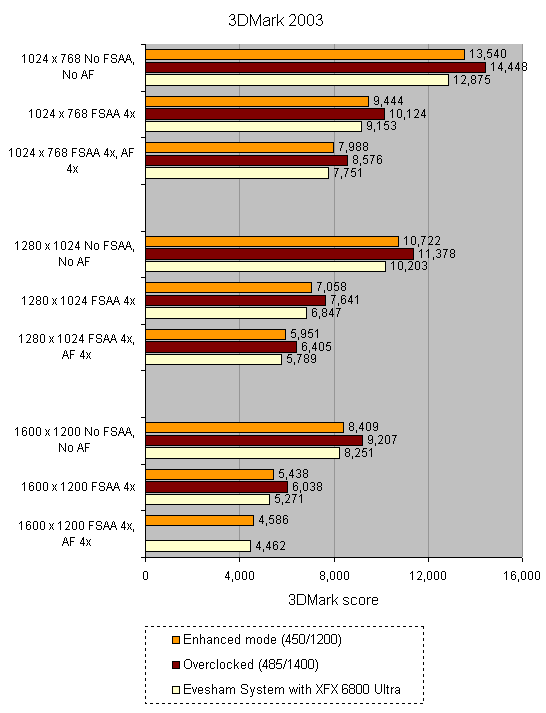
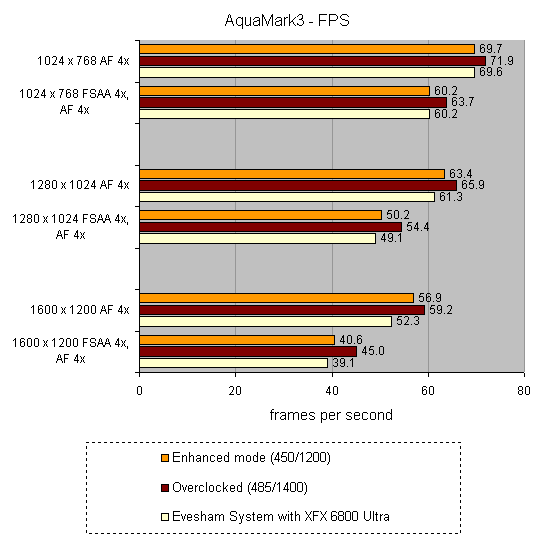
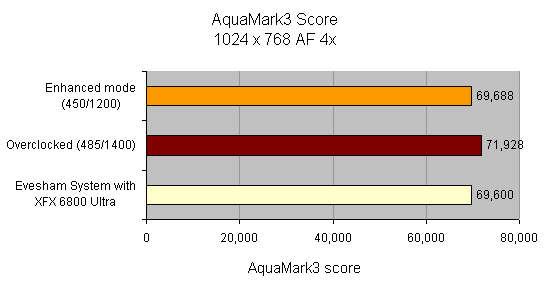
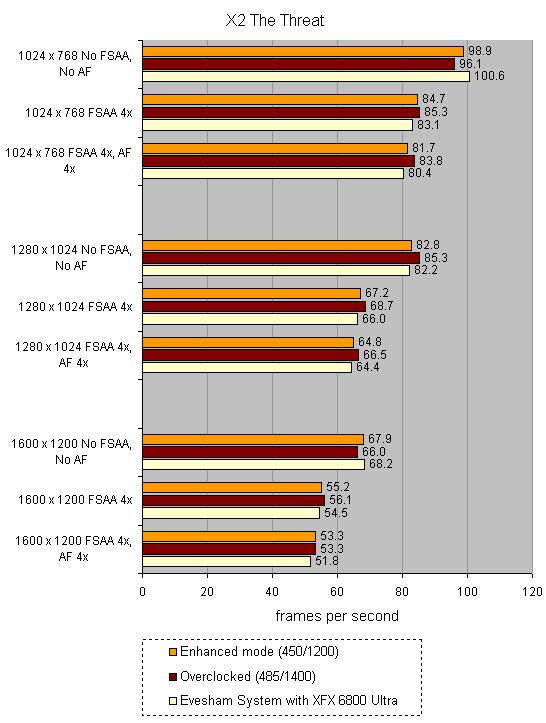
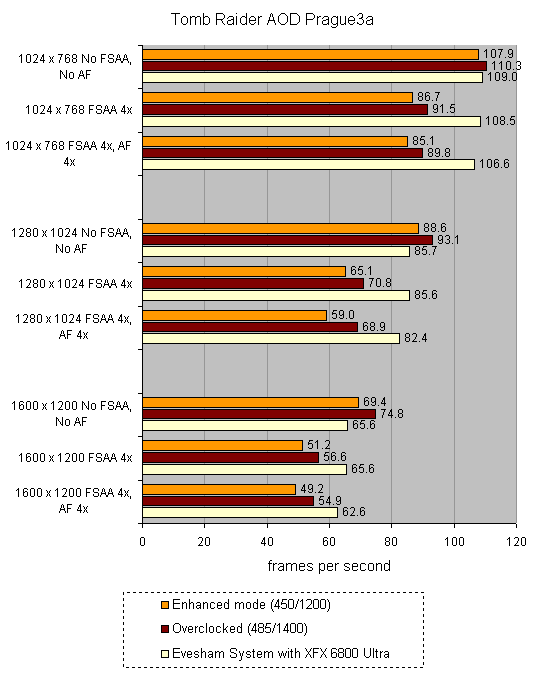
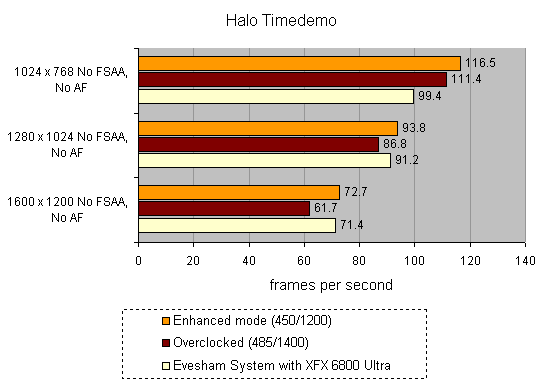
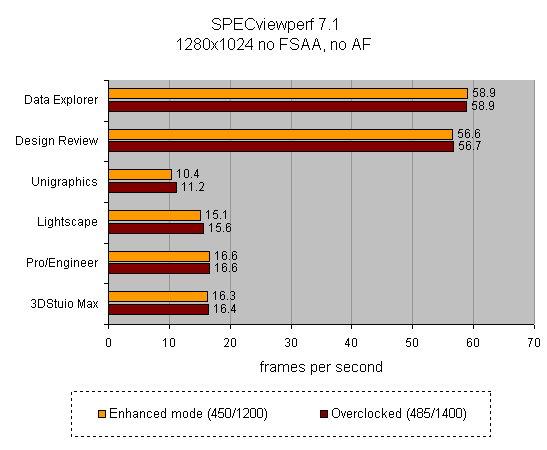
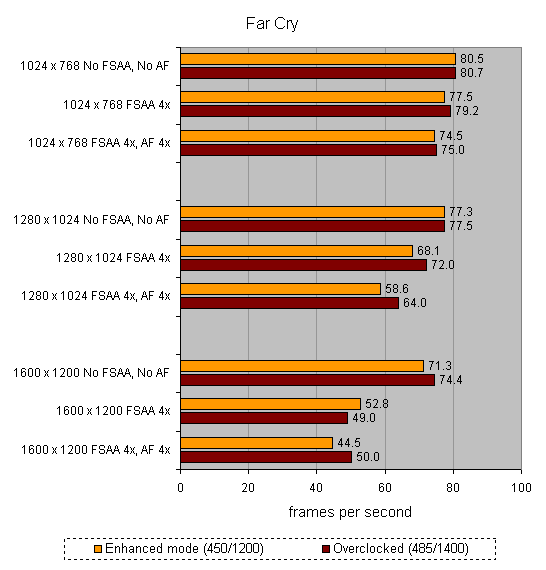
Trusted Score
Score in detail
-
Value 4
-
Features 8
-
Performance 10

